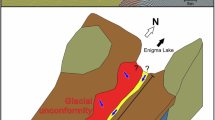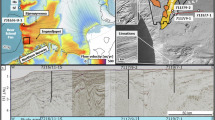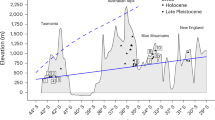Abstract
THE criticism by Mr. Clement Reid of my paper recently read before the Geological Society, and not yet published, renders it necessary to remind him that his views as to the mammoth not being pre-glacial are not new, but were advanced by me ten years ago (Pop. Science Review, 1868, p. 275; Geol. Mag., v. 7, July, 1868), and afterwards given up by the light of a wider experience. His arrangement of the complicated glacial deposits of Britain in one linear series, like all similar attempts, appears to me to be based on the fallacy that a difference in the character of the strata, in different areas, implies a difference in point of time. His divisions seem to me purely local, and mostly peculiar to the eastern counties. I see no reason for believing that, while five out of the six proposed were being accumulated east of the Pennine chain, there were no glacial phenomena in the west, in Lancashire or Cheshire, until the last phase, or the sixth of the eastern divisions; or, in other words, that the lower boulder clay of Lancashire and Cheshire is the equivalent of the last division. On the contrary, the marine sands and gravels covering the lower boulder clays, on both sides of the Pennine chain, and occupying a large area round Crewe, Stafford, and in the Trent Valley, is to me a well-marked horizon, defining the upper from the lower series of boulder clays. It is very likely that the lower boulder clay of Lancashire and Cheshire is the equivalent of the lower boulder clay series of Norfolk and Suffolk, as well as of the “moraine profonde” of Scotland. It must, however, be admitted that the correlation of the glacial deposits in various parts of Britain has not yet been satisfactorily made out “Tot homines quot sententiæ”.
Similar content being viewed by others
Article PDF
Rights and permissions
About this article
Cite this article
DAWKINS, W. The Range of the Mammoth. Nature 19, 146 (1878). https://doi.org/10.1038/019146a0
Issue date:
DOI: https://doi.org/10.1038/019146a0



